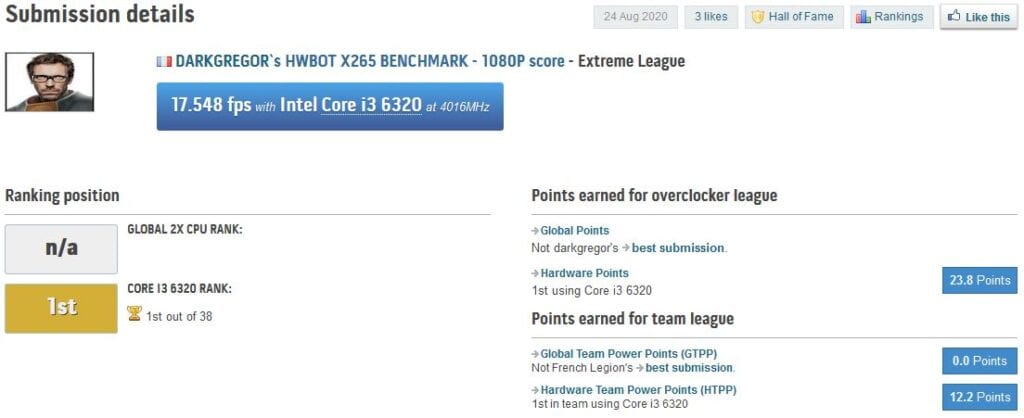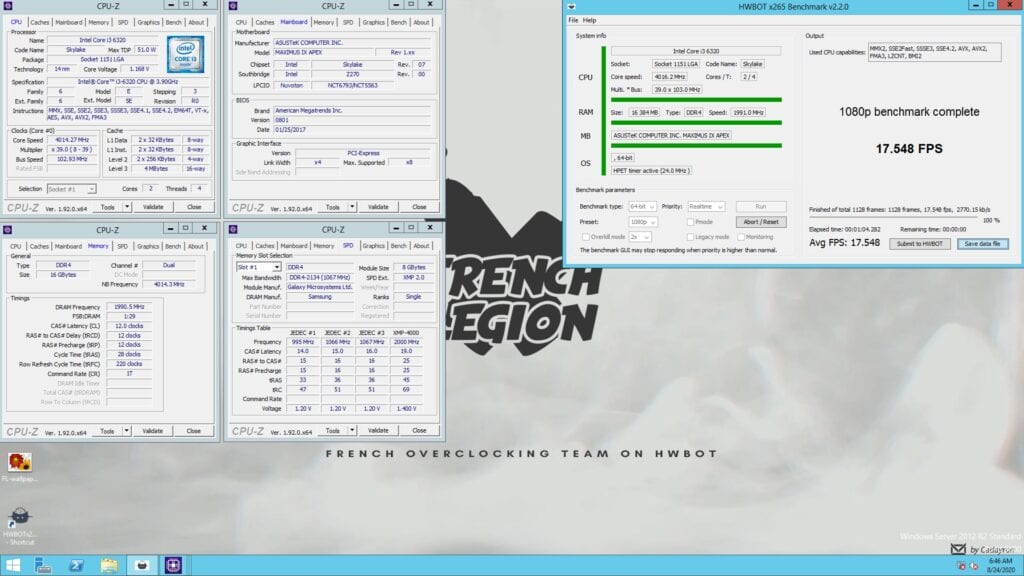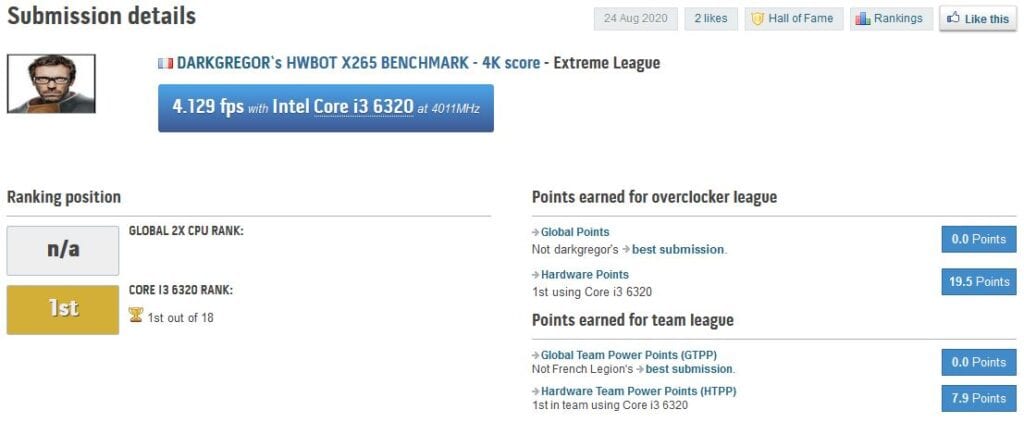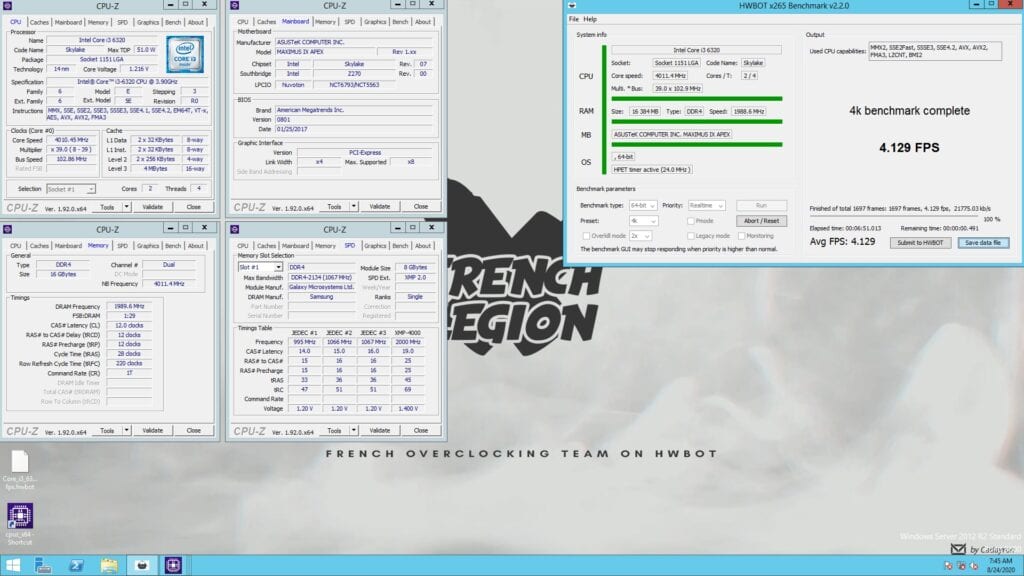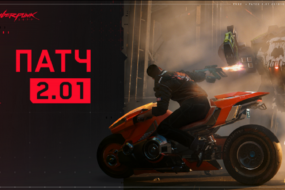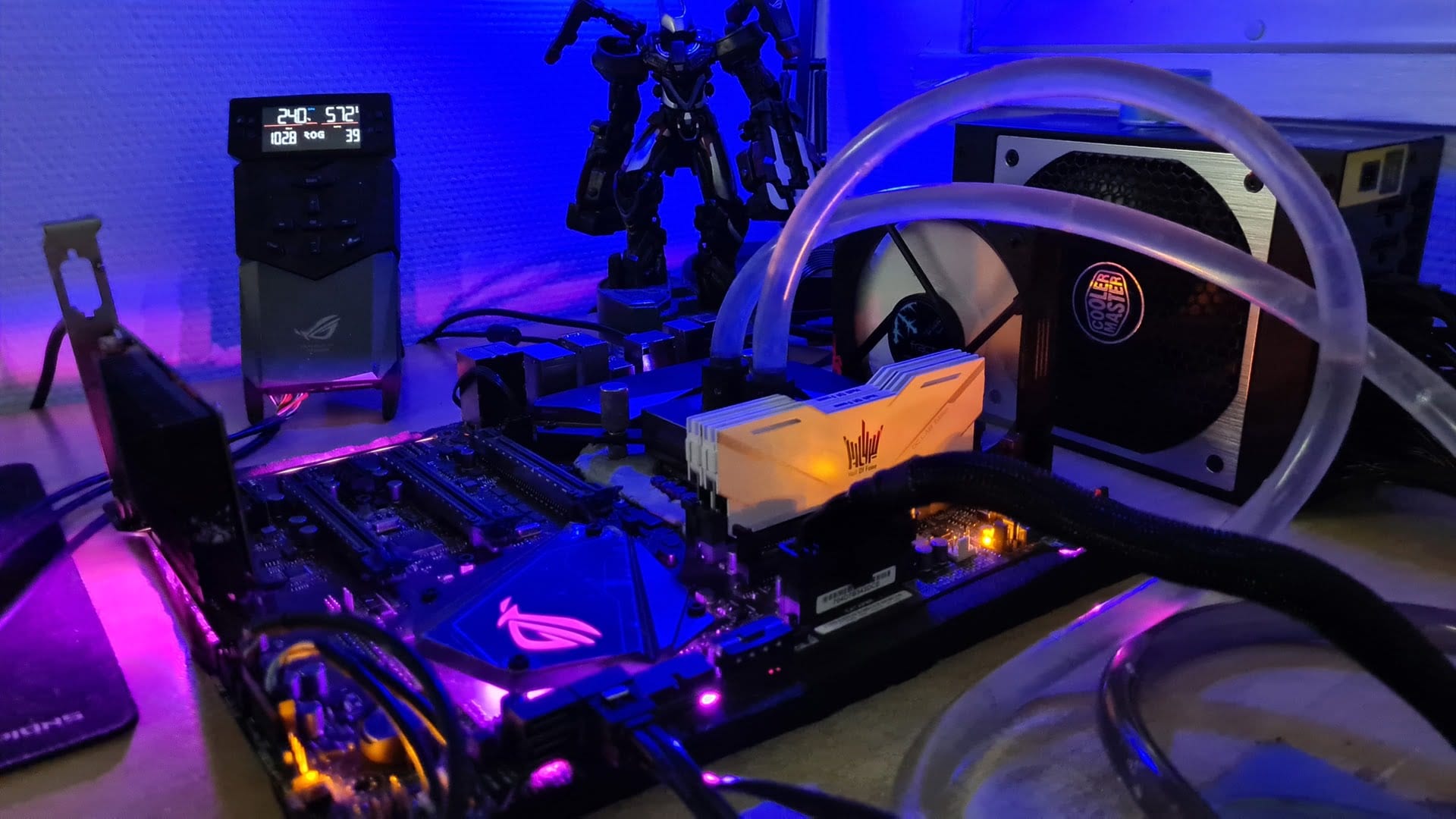
Overclocking modern and relatively modern Intel processors with a locked multiplier is a thankless task: the BCLK bus frequency is rigidly tied to the rest of the CPU nodes, which is why, at best, its maximum stable speed is limited to 104-109 MHz (and this is in the presence of a decent motherboard). There is, of course, a loophole that allows you to force Skylake chips above 110 MHz by BCLK, but in this case, the speed of execution of AVX/AVX2-instructions is almost halved.
This is completely unacceptable in current benchmarks since most of them get a tangible acceleration precisely from the AVX / AVX2 extensions. A good example is the HWBOT x265 Benchmark used in this news note:
French enthusiast darkgregor scored two gold medals in the ranks for the Intel Core i3-6320 chip. Depending on the version of the benchmark, the frequency of the dual-core processor was 4016MHz for HWBOT x265 Benchmark – 1080p and 4011MHz for HWBOT x265 Benchmark – 4k:
| Discipline: | Result: | Processor frequency: |
| HWBOT x265 Benchmark – 1080p | 17.548 fps | 4016MHz |
| HWBOT x265 Benchmark – 4k | 4.129 fps | 4011MHz |
Such a low final frequency of the chip allowed the overclocker not to switch to extreme cooling methods, just to limit himself to using a “simple” liquid cooling system.
To reach 4016 and 4011 MHz, the Frenchman only set the BCLK bus at a sparing 102.93 and 102.86 MHz, respectively. In this case, the frequency of the RAM was at ~ 3980 MHz with delays of 12-12-12-28.
The darkgregor test setup consisted of the following components:
- Motherboard – ASUS ROG Maximus IX Apex
- RAM – 2 x 8GB KFA2 Hall Of Fame DDR4-4000 (HOF4CXLBS4000M19SF162K)
And it looked like this:
Source: HWBot enthusiast profile
